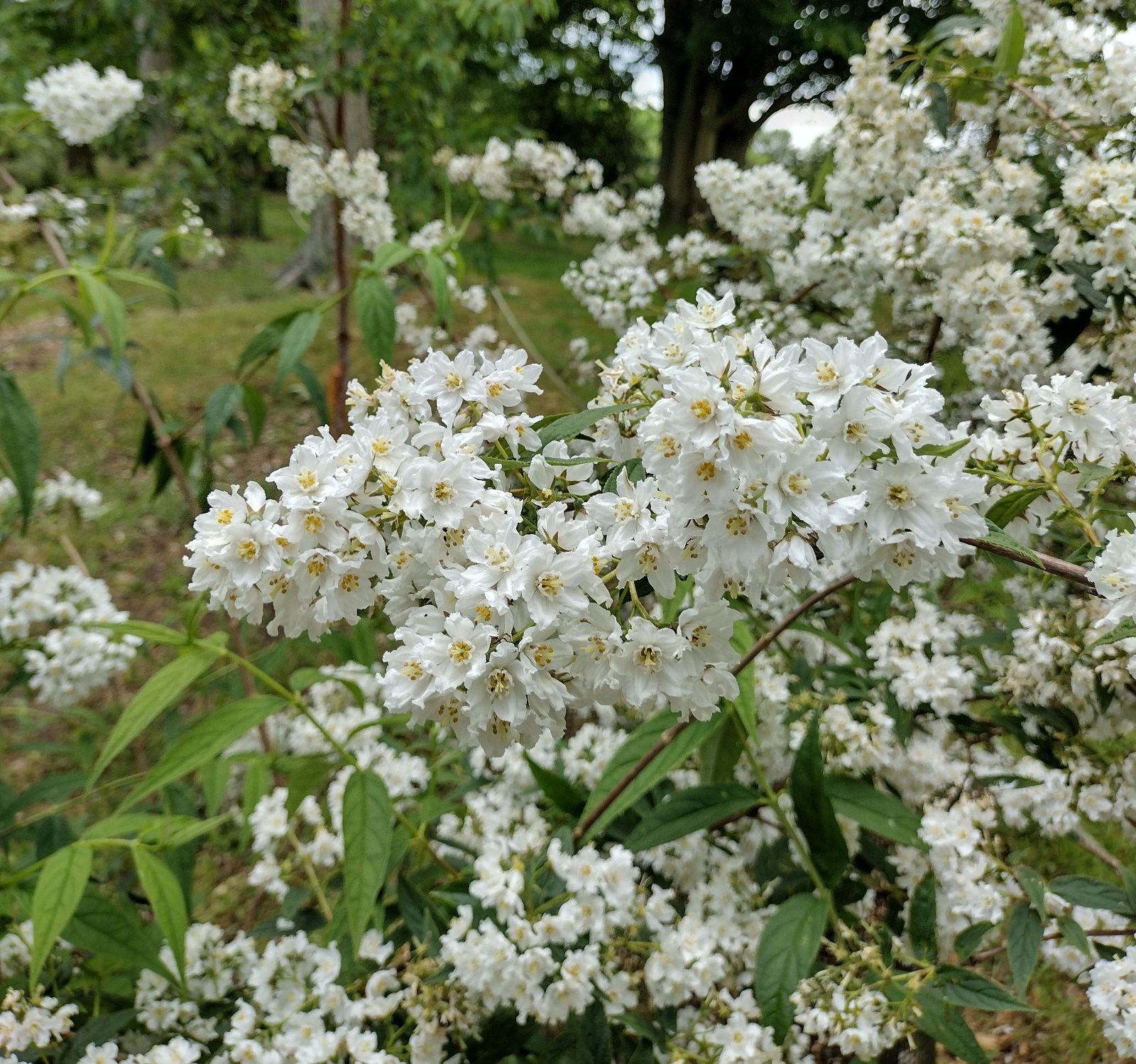Deutzia vilmoriniae
Credits
Article from Bean's Trees and Shrubs Hardy in the British Isles
Recommended citation
'Deutzia vilmoriniae' from the website Trees and Shrubs Online (treesandshrubsonline.
Genus
Other taxa in genus
- Deutzia amurensis
- Deutzia compacta
- Deutzia corymbosa
- Deutzia discolor
- Deutzia × elegantissima
- Deutzia glomeruliflora
- Deutzia gracilis
- Deutzia grandiflora
- Deutzia × hybrida
- Deutzia × lemoinei
- Deutzia longifolia
- Deutzia × magnifica
- Deutzia maximowicziana
- Deutzia mollis
- Deutzia monbeigii
- Deutzia pulchra
- Deutzia purpurascens
- Deutzia reflexa
- Deutzia rehderana
- Deutzia × rosea
- Deutzia rubens
- Deutzia scabra
- Deutzia schneiderana
- Deutzia setchuenensis
- Deutzia sieboldiana
- Deutzia staminea
- Deutzia taiwanensis
- Deutzia wilsonii
A vigorous shrub of erect habit up to 8 ft or perhaps more high; young shoots slightly rough with scurfy stellate hairs at first, becoming brown and shining. Leaves oblong-lanceolate, rounded or broadly tapered at the base, slenderly pointed, sharply toothed, 2 to 51⁄2 in. long, 5⁄8 to 2 in. wide, dark dull green and rough with stellate hairs above, grey and covered with a close felt of starry down beneath; also with simple hairs at the sides of the midrib and veins; stalk 1⁄6 to 1⁄2 in. long. Flowers white, 1 in. across, in broad corymbose panicles up to 3 in. long. Petals ovate with the edges upturned; wings of stamens dilating upwards to about midway, then narrowing, awl-like, to the anthers. Calyx-lobes linear-lanceolate, reflexed, covered like the flower-stalk with grey scurf, persistent. Fruits hemispherical, 3⁄16 in. across.
Native of Szechwan, China; sent to Maurice de Vilmorin at Les Barres by the Abbé Farges in 1897; introduced to England in 1905. It is a rapid grower, and its fine flowers escape damage by late frosts better than those of most deutzias do, and usually make a good display. It was named after the late Madame de Vilmorin of Les Barres. Allied to D. discolor.
From the Supplement (Vol. V)
As remarked, this species is near to D. discolor and is included in it by Zaikonnikova.

